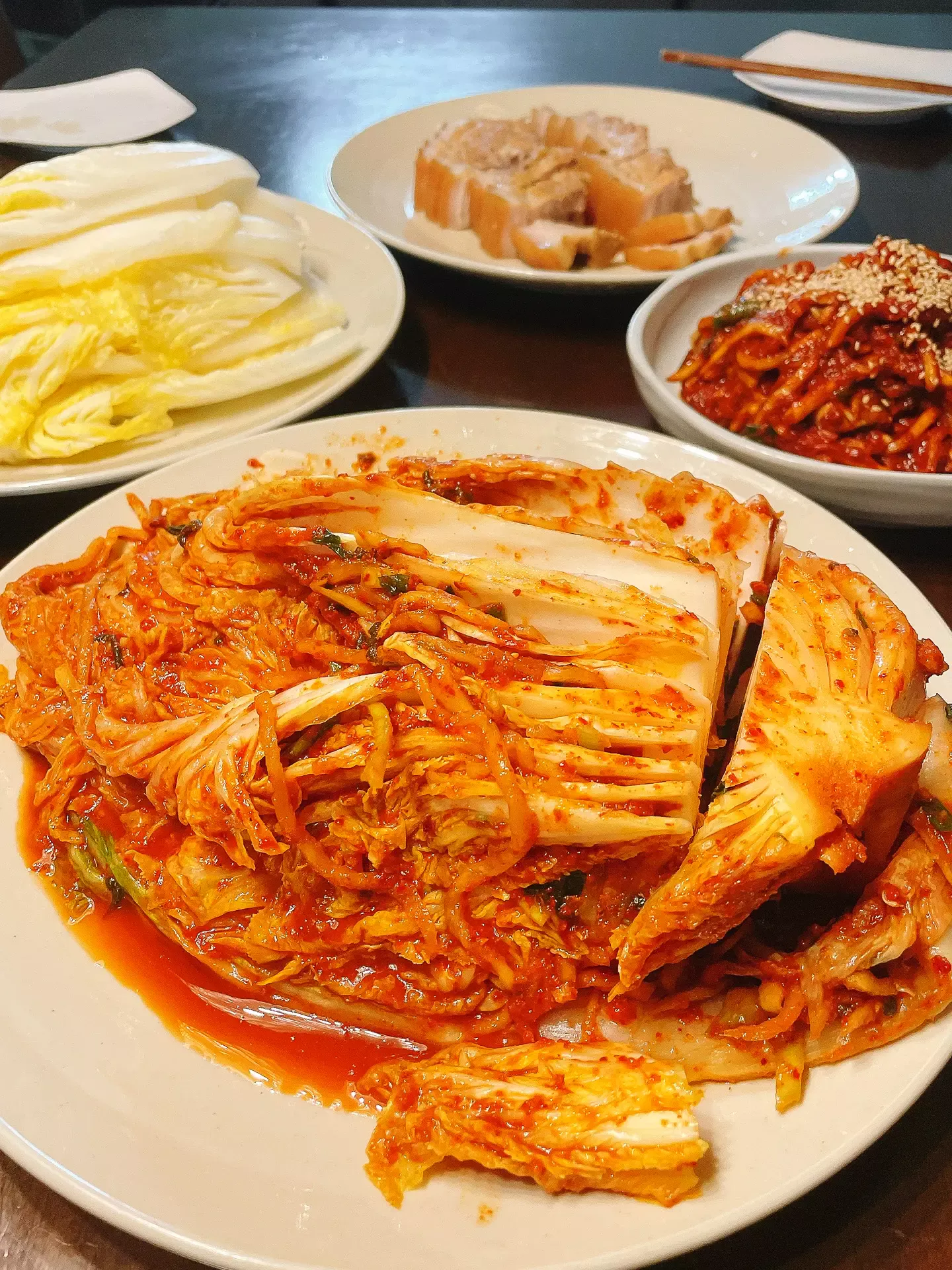Today, I’m sharing 10 Must-Try Korean Recipes with Kimchi. As a Korean, I can confidently say these are dishes we actually eat all the time!
Table of Contents
Leftover Kimchi?
Have you ever made or bought too much kimchi, and now it’s getting sour way too fast? In Korea, we have special kimchi refrigerators that keep it fresh for a long time. Since moving to Belgium, however, I’ve learned that kimchi ferments quickly without one.
Don’t worry, though. Korean cuisine offers many delicious ways to use up extra kimchi. Below, I’m sharing some of my favorite kimchi recipes that are so tasty, you might finish all your leftovers in a day!
Top 10 Authentic Korean Recipes with Kimchi
Kimchi Jjigae 김치찌개
Kimchi jjigae is one of the most beloved stews among Koreans. Do you have kimchi that has become too sour from sitting for too long? Then it’s the perfect time to make kimchi stew! The longer the kimchi is aged, the deeper the flavor of the stew!
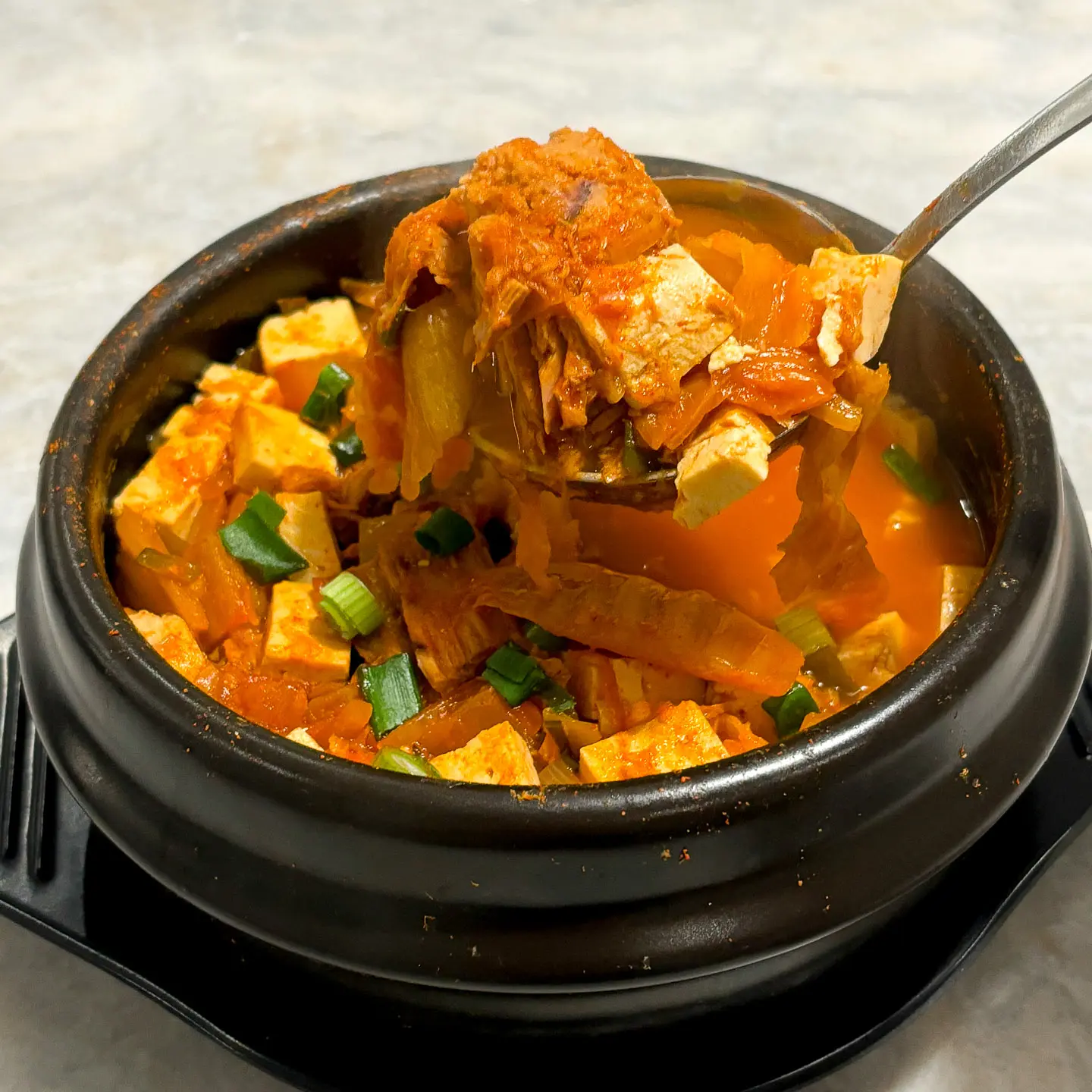
The most common way to make kimchi jjigae is with pork, but in Korea, people often use canned tuna or mackerel. In the Busan region, some even use anchovies. The flavor of the broth changes dramatically depending on the protein used. You can also add ingredients like tofu.
This is the most common kimchi jjigae with pork belly in Korea. Many Koreans say their favorite kimchi jiigae is this one!
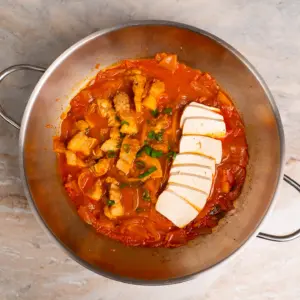
This is my ultimate tuna kimchi jjigae recipe. In Korea, using canned tuna instead of meat is common. It’s much easier to make than the pork version, and I love how clean and light the flavor is.
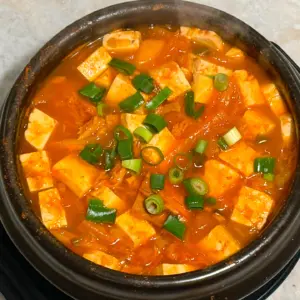
- Earthenware Pot (Ttukbaegi): https://amzn.to/4lgtPKm (US)
Kimchi Jjim (Braised Kimchi) 김치찜
Unlike kimchi jjigae, kimchi jjim is a braised dish with little to no broth. It is simmered until almost all of the liquid has evaporated. The more aged and sour the kimchi, the deeper the flavor. In fact, I’d say you must use sour, well-fermented kimchi for this dish. It’s traditionally simmered with pork, mackerel, or canned fish, such as saury. The kimchi removes any unpleasant smell from the meat or fish, and the longer it cooks, the more tender it becomes.
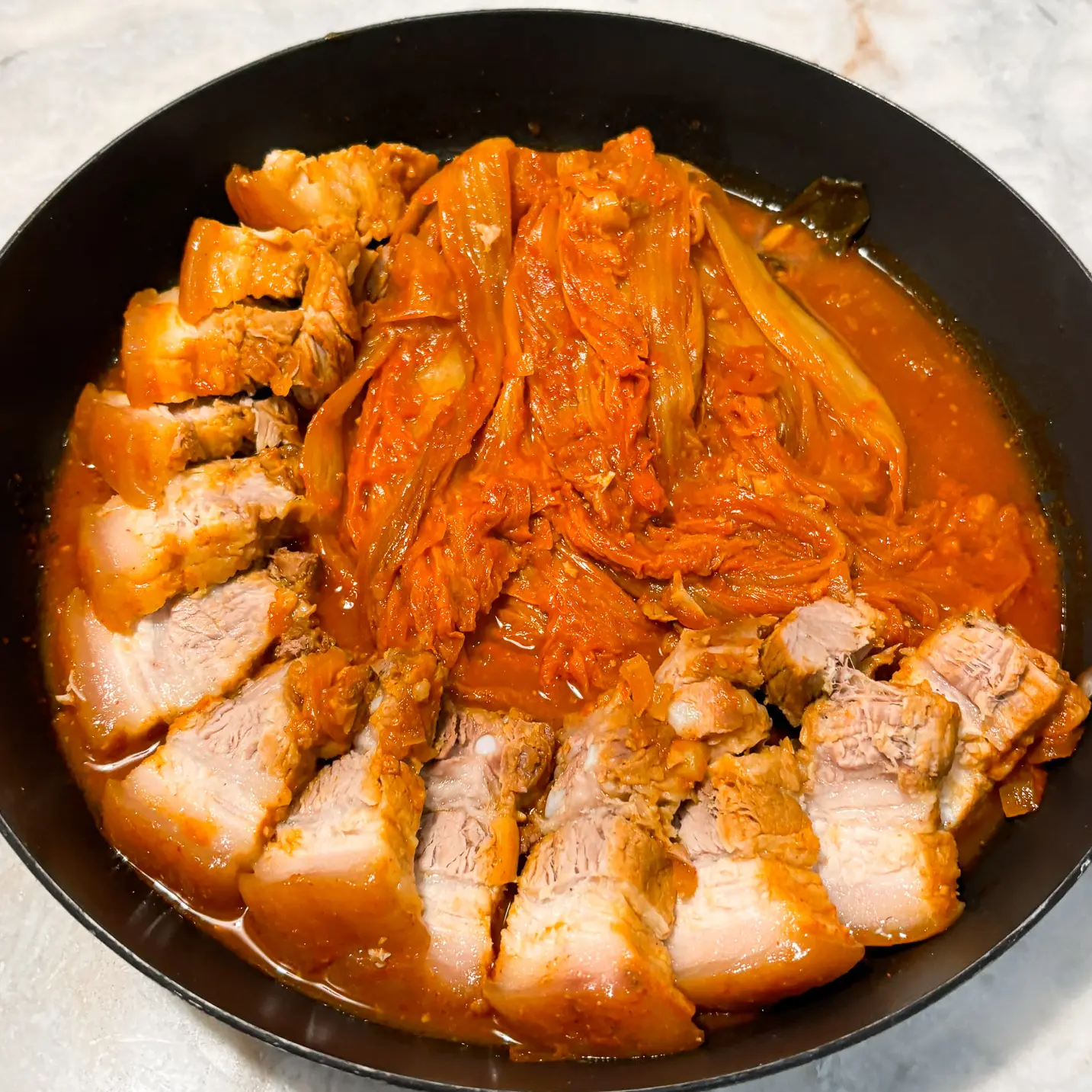
Wrap some kimchi and meat in a spoonful of rice, and you might end up eating four bowls in one sitting—it’s the ultimate rice thief! This is my one of my favorite recipes with kimchi, pork kimchi jjim recipe, made with a thick slab of pork belly. It’s my mom’s secret recipe. One bite, and you’ll experience the magic of Korean home cooking. Just remember to use well-fermented kimchi.
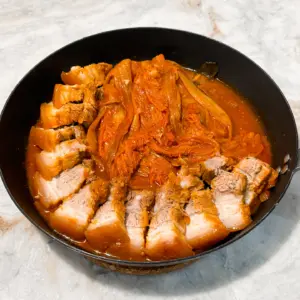
Kimchi Mandu (Kimchi Dumplings) 김치 만두
This is one of the most famous kimchi dishes. My family eats kimchi mandu (dumplings) much more often than gogi mandu (meat dumplings). The filling is made with kimchi, ground meat, tofu, glass noodles, mung bean sprouts, and garlic chives. It is all wrapped in dumpling wrappers. It’s best to use moderately aged kimchi—not too fresh and not overly sour. Overly fermented or under-fermented kimchi isn’t ideal for making dumplings.
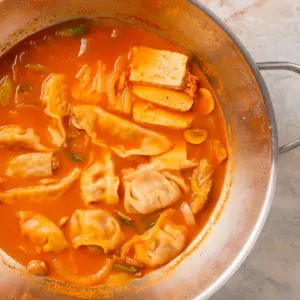
You can steam the mandu, pan-fry them for a crispy texture, or cook them in a dumpling hot pot (mandu jeongol). The flavors blend beautifully in a hot pot, and once you taste the rich broth, you’ll be hooked. Here is my mandu jeongol recipe. You can add all sorts of vegetables, making it a delicious, nutritious meal.
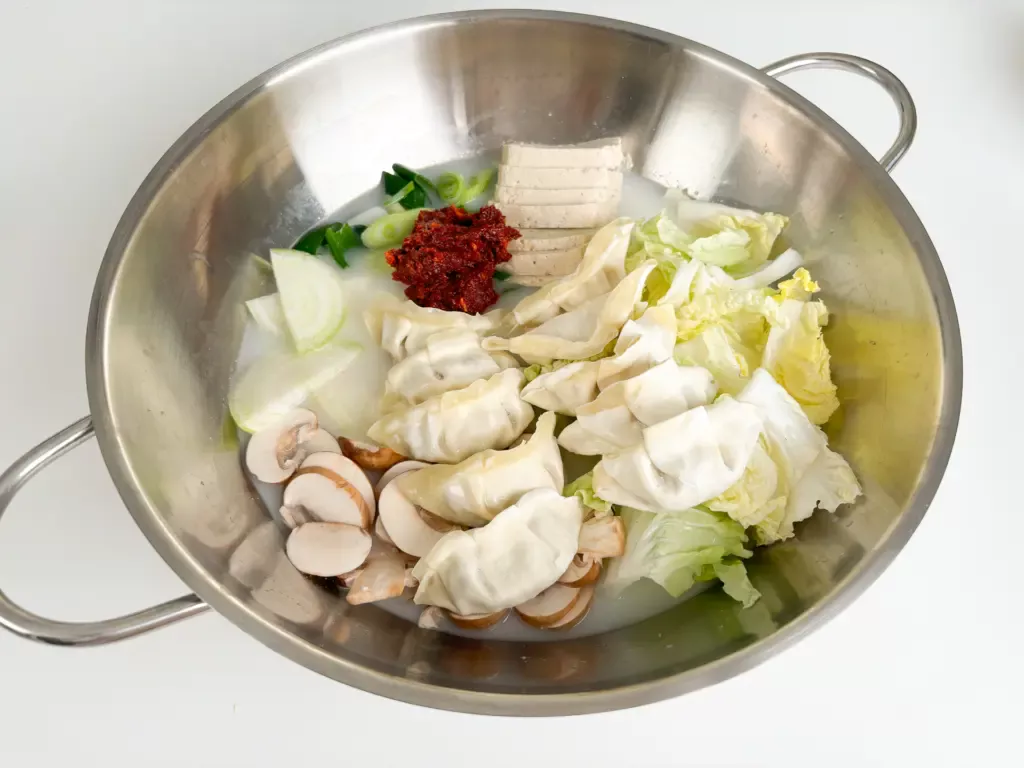
- Jeongol Pot: For simmering Jeongol, you’ll need a wide and deep wok. https://amzn.to/3DQgIPu (US)
Kimchi Buchimgae (Kimchi Pancake) 김치 부침개
This is a crispy Korean pancake made by mixing kimchi and flour with water, then pan-frying it in oil. It’s one of the easiest and most commonly made kimchi dishes in Korean homes. In fact, more Koreans make kimchi pancakes at home than the seafood scallion pancake (haemul pajeon) you might be more familiar with.
It’s a classic dish for rainy days, especially when paired with a cold glass of makgeolli (Korean rice wine). You can add squid or meat for extra flavor, but honestly, it tastes amazing with just kimchi. The key is that crispy outside and soft, moist inside. While Korean pancake mix (buchimgaru) makes it extra crispy, many Korean moms and grandmas simply use plain flour—and it still turns out delicious.
Kimchi Bokkeumbap (Kimchi Fried Rice) 김치 볶음밥
This is probably one of the recipes with kimchi you know best: kimchi bokkeumbap. The kimchi used here should be well-fermented with a sharp, sour kick. It’s one of Korea’s favorite fried rice dishes. It’s made by finely chopping the kimchi and stir-frying it with rice. Thanks to kimchi’s bold flavor, you don’t need much seasoning.
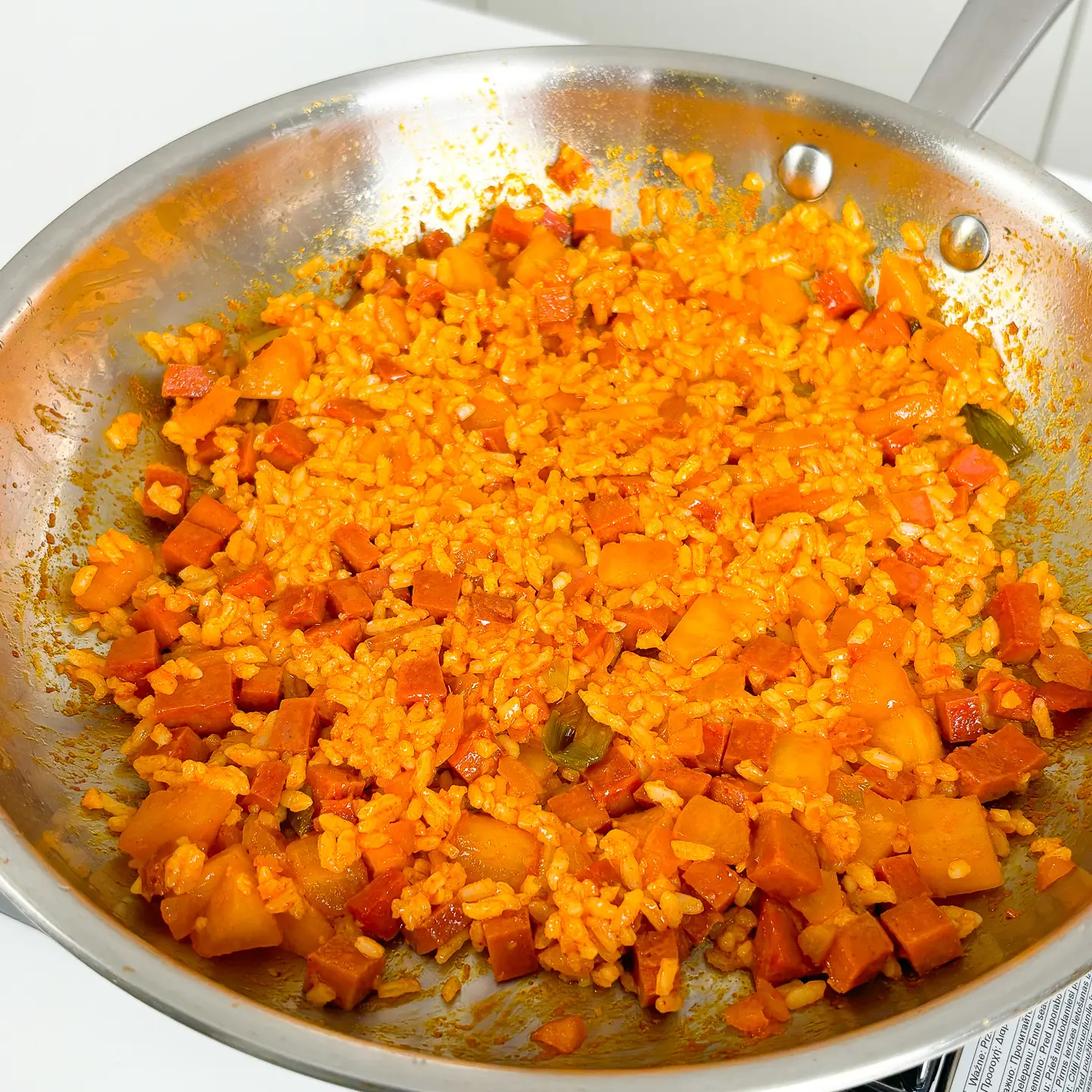
People often add ham, sausage, or tuna for extra umami and texture. Some top it with a fried egg for protein, while others stir the egg into the dish during cooking. Another popular version is topping it with melted mozzarella cheese. You can also try making it with diced kkakdugi (cubed radish kimchi) instead of napa cabbage kimchi. Kkakdugi kimchi fried rice is beloved in Korea for its crunchy texture. If you’ve only tried kimchi bokkeumbap with napa cabbage kimchi, I highly recommend giving this version a try!

Kimchi Ramyum 김치 라면
In Korea, we have all kinds of creative ramen recipes, such as cheese ramen and soft tofu (sundubu) ramen. One of the easiest kimchi dishes might be kimchi ramen. Just add kimchi to your boiling ramyun and you’re done. Well-fermented kimchi is best, and adding a spoonful of kimchi brine deepens the flavor of the broth, making it richer, spicier, and more refreshing.
Koreans often eat ramen to cure hangovers. Personally, I love adding bean sprouts or kimchi to my hangover ramen. The spicy, comforting broth is perfect the day after drinking.
Tofu Kimchi 두부 김치
As the name suggests, tofu kimchi is kimchi served with tofu. The tofu is boiled and served warm while the kimchi is stir-fried in oil. Drizzling sesame oil on top adds great flavor, though my mom often used perilla oil instead. Its earthy aroma pairs well with kimchi.
Spoon the stir-fried kimchi over the tofu. It can be served as a side dish or an anju, a dish served with alcohol. Some people add boiled pork belly and enjoy it as sam-hap, meaning “the harmony of three”: pork, tofu, and kimchi.
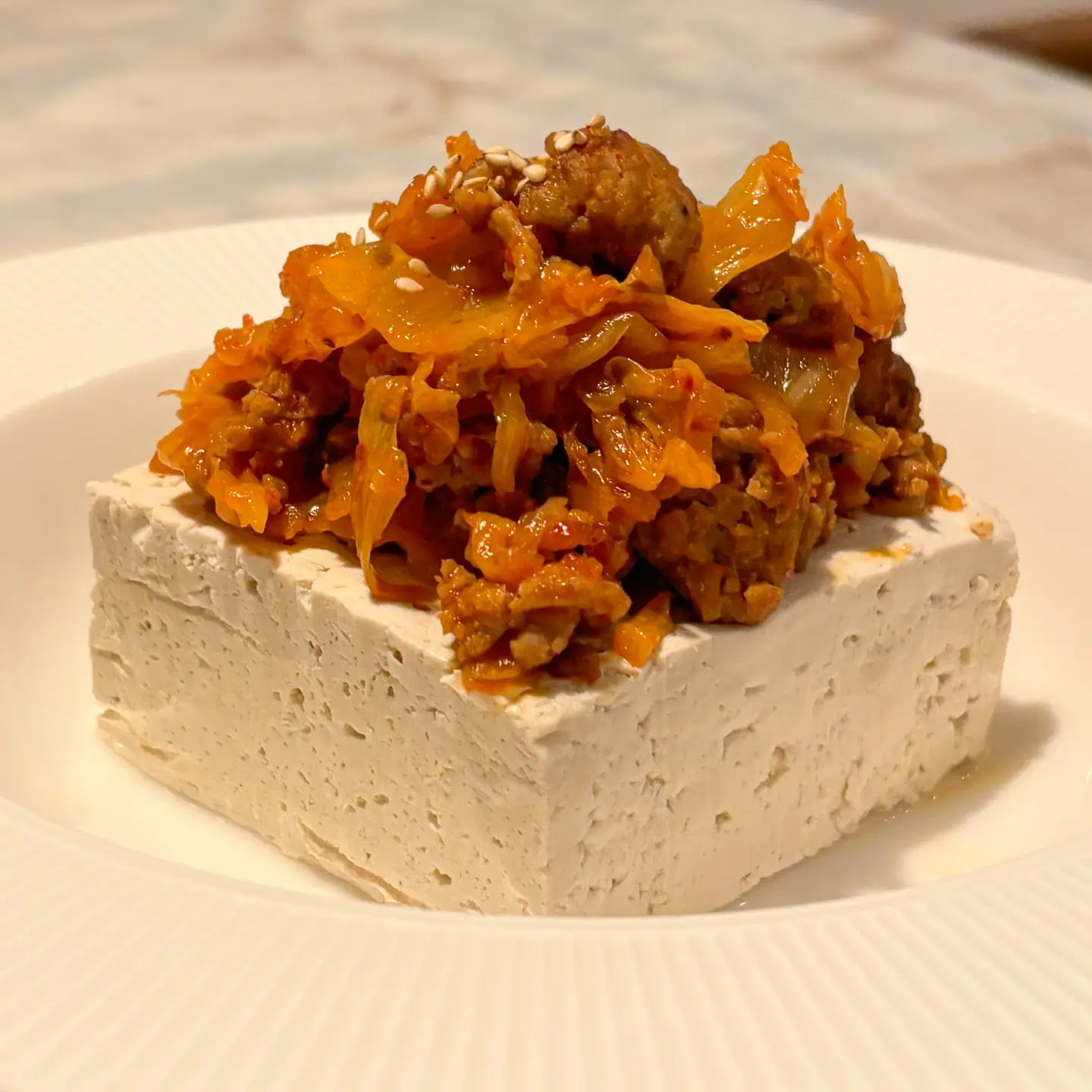
This version is for meat lovers—it’s tofu kimchi topped with stir-fried kimchi and pork. It’s one of the most delicious and healthy kimchi dishes that I truly recommend.
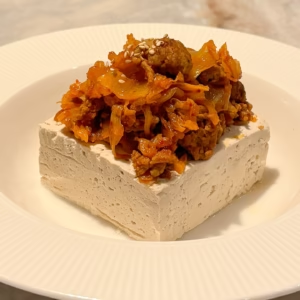
Kimchi Bibim Guksu (Spicy Kimchi Cold Noodles) 김치 비빔국수
This was one of my mom’s go-to summer kimchi dishes. On hot days, she didn’t want to turn on the stove for long—and a cold, refreshing noodle dish like this was the perfect way to beat the heat. Kimchi Bibim Guksu is made by mixing thin wheat noodles (somyeon) with a sweet and spicy gochujang sauce and chopped kimchi. The crunchy kimchi and tangy sauce wake up your appetite, especially when it’s too hot to eat anything else. We usually top it with sliced cucumber and a boiled egg.
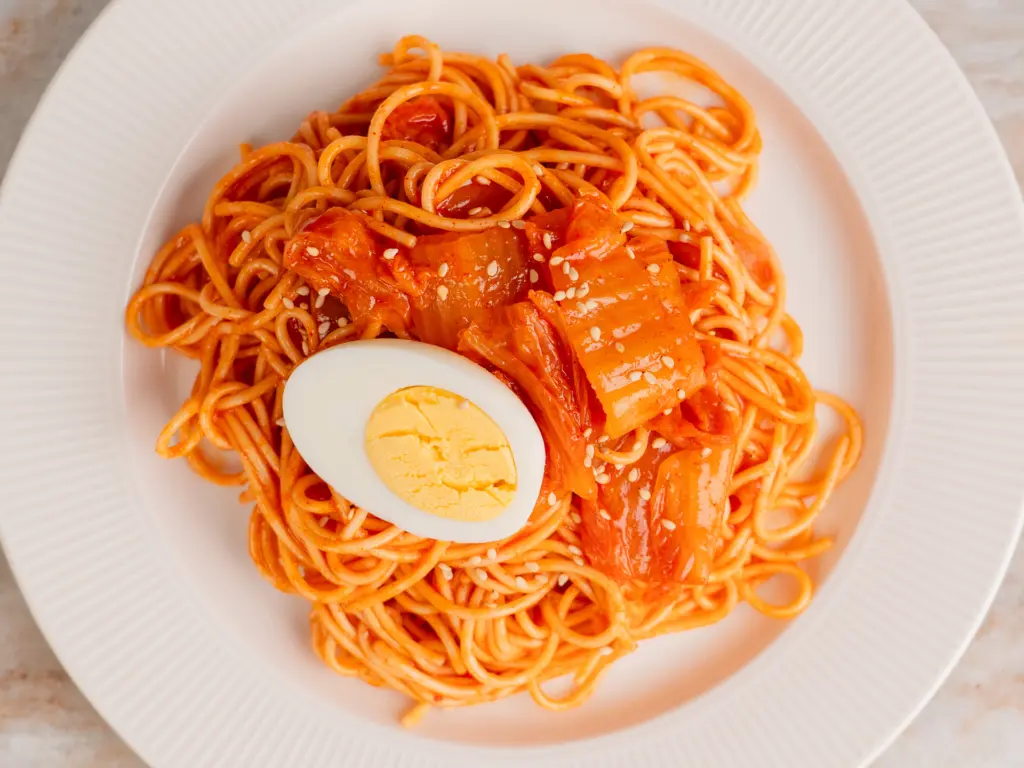
This is my mom’s recipe—it’s super simple, and you won’t even need to go grocery shopping to make it. I highly recommend it as an easy, satisfying kimchi dish.
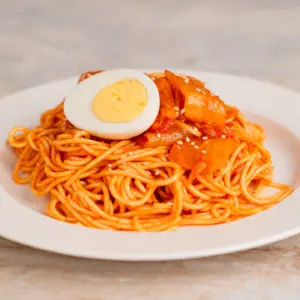
Oh, and one more thing—this goes so well with dumplings. If dumplings alone feel a bit lacking, pair them with this Kimchi Bibim Guksu. It’s a match made in heaven.
Kongnamul Kimchi Guk (Bean Sprout Kimchi Soup) 콩나물 김칫국
This is one of the easiest and most commonly eaten Korean soups. All you need is kimchi and bean sprouts. Add garlic and green onions, the staples of Korean cooking. Season with guk ganjang, a type of soy sauce used for soups, and that’s it! Thanks to the kimchi and bean sprouts, it’s also one of the best recipes with kimchi for hangovers. It’s light, spicy, and soothing.
Bossam Kimchi 보쌈 김치
Bossam Kimchi is one of the most popular kimchi dishes, typically served with slices of boiled pork (suyuk) and kimchi. It’s often enjoyed with freshly made kimchi, but it tastes amazing with well-fermented kimchi too. At Korean bossam restaurants, the kimchi served with the pork tends to be sweeter and more heavily seasoned than regular kimchi.
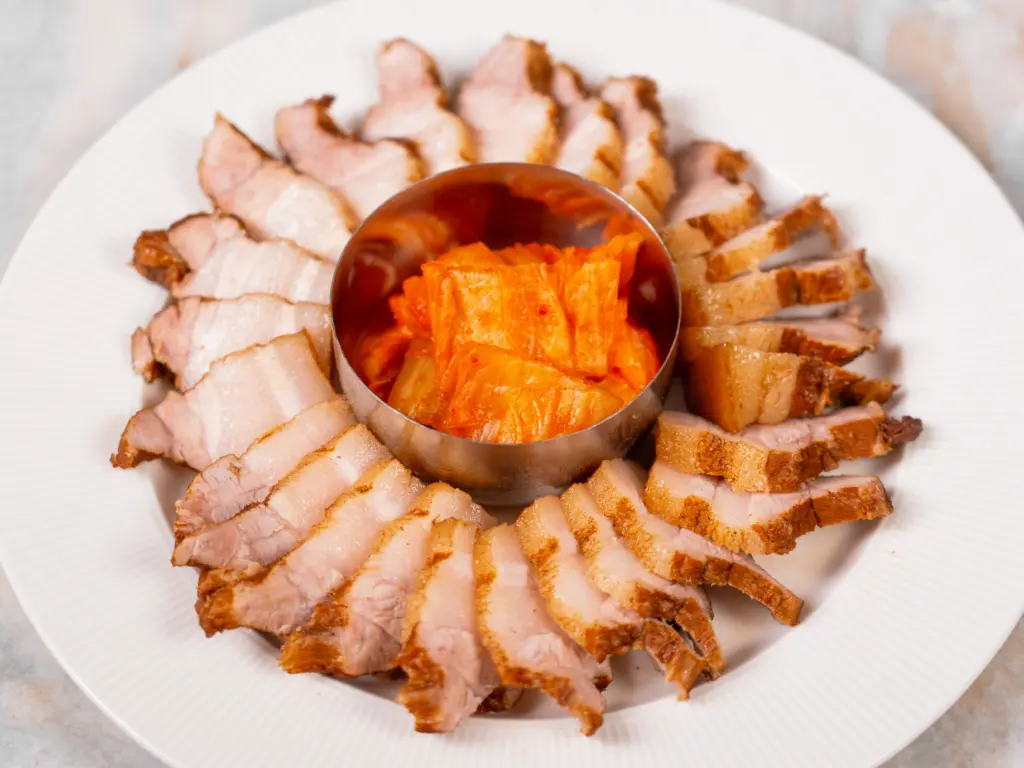
This is my super easy Cola Bossam recipe—yes, cola! It’s one of the easiest and most surprising recipes with kimchi. You don’t need any fancy spices—cola gets rid of the porky smell, makes the meat tender, and gives it a beautiful color. It’s like magic.
The recipe is simple, but you must pay attention to two things: heat control and cooking time. That’s what determines how juicy and tender your pork will be. Follow the instructions, and you’ll get that restaurant-level taste—or even better.
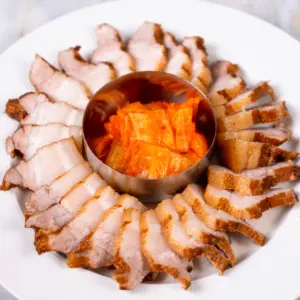
Disclosure: Blonde Kimchi is part of the Amazon Services LLC Associates Program, an affiliate advertising program that allows websites to earn advertising fees by linking to Amazon.com and promoting products.
